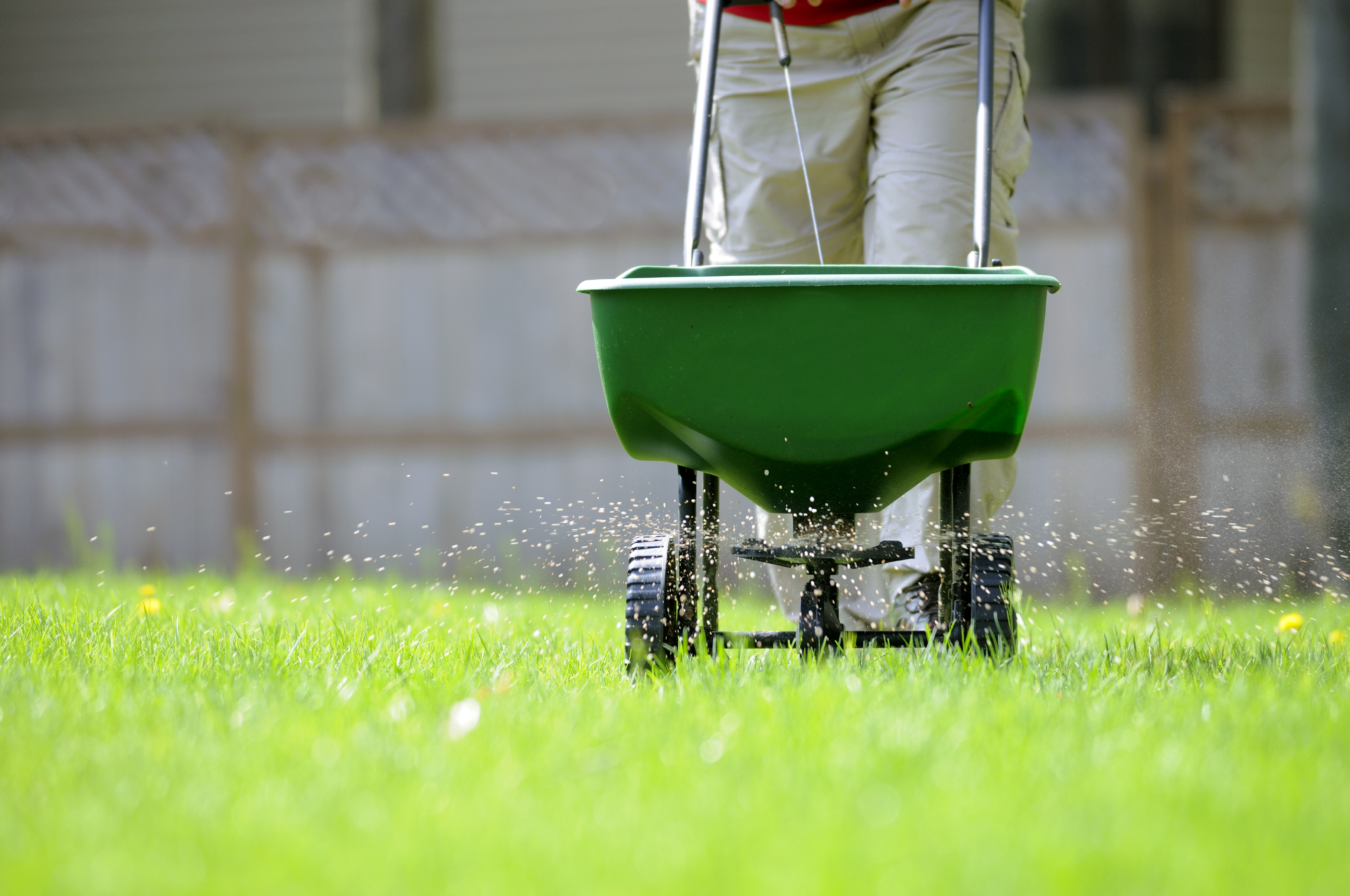
Wondering the best way to make sure you have a gorgeous lawn all summer long? Become a forward-thinker. Fall is the best time to provide care to your Providence yard. If you take a few careful steps now, before your grass goes dormant, you will have a lush lawn throughout all of Rhode Island’s changing seasons.
1. Don’t Leave Those Leaves!
While you may like the colorful display they provide to your lawn (or perhaps you even enjoy embracing your inner child by jumping in them!) it’s not a good idea to allow leaves to remain on your lawn for extended periods. Fallen leaves block light and trap moisture, which can be dangerous for the grass underneath. Your grass’ delicate blades can become compressed under the weight of the leaves, creating a difficult time for growth once the snow melts. Additionally, leaves can harbor fungi throughout the winter, like snow mold, which can make you sick.
 If you don’t want to rake and remove your leaves, at the very least, chop them up with your lawnmower. Doing so will break them down into smaller pieces that you can use as a mulch for your lawn.
If you don’t want to rake and remove your leaves, at the very least, chop them up with your lawnmower. Doing so will break them down into smaller pieces that you can use as a mulch for your lawn.
2. Cut Your Lawn at The Appropriate Height
Just because the kids are back in school doesn’t mean it’s time to stash the mower. Your grass will grow until the first freeze; therefore you need to keep cutting. Grass that’s too tall will mat and be vulnerable to snow mold, while grass that’s too short will impede root development in the spring. Instead, keep your lawn at about a two to three-inch height. Doing so will ensure it has all the nutrients needed to keep it in a healthy dormancy until the spring.
3. Keep Watering
Many people abandon their irrigation routines as soon as the temperatures start to drop. While it’s true that your lawn needs less water as there is more rain, more dew, and less evaporation, it still needs about an inch of moisture per week. If your grass isn’t receiving enough water through natural precipitation, you need to continue irrigation practices. Once the first frosts start to hit, however, make sure to pull your hoses and flush your irrigation lines to prevent freeze and damage.
4. Fertilize Sparingly
Fertilization is a good idea in the fall, but only if you have cold-season grass. Fertilizing warm-season grass in the fall can cause it to have a growth spurt (not a good idea if it’s just about ready to go dormant). Make sure you include plenty of potassium in your fertilizer, as this will help your grass store nutrients throughout the winter.
5. Aerate Your Lawn
Regular aeration is an important habit to start. It’s best to aerate your lawn once every other year or so. Aeration prevents your soil from becoming compacted and covered with thatch. Your grass’ roots will be able to reach the nutrients, water, and oxygen they have been hungering for, without having to expend as much energy to do so.
6. Overseed and Apply a Pre-emergent Herbicide
Fall is an excellent time to overseed, offering cooler temperatures and moist soil. It will allow you to introduce more resilient grasses or even provide a way to cut down on weeds naturally. On the contrary, if you plan on applying a pre-emergent herbicide, such as crabgrass prevention, hold off on overseeding or proceed with caution. You won’t want to have to worry about the herbicide harming your fresh growth.
7. Repair, Service, and Store Your Summer Lawn Care Essentials
Fall lawn care includes taking care of your rakes, shovels, irrigation equipment, and lawn mower, to even your lawn chairs. Items left out over the winter months can cause your grass to become compressed and damaged. As a result, you may have unsightly bald spots on the lawn come spring. Instead, store all of your equipment inside. Make sure everything is sharpened and serviced, including your lawn mower blades. Also, be sure to drain any gas-powered tools before storing to help prevent rusting.
Need additional help? Visit our Providence lawn care page for more info!